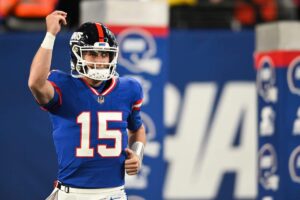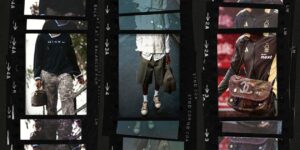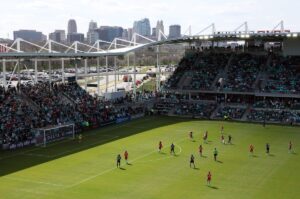CChicago’s 82-story Aqua Tower seems to flutter with the wind. Its unusual, undulating facade has made it one of the most unique features of Chicago’s skyline, distinct from the many rectangular glass towers that surround it.
In designing it, architect Jeanne Gang not only thought about how people would see it, dancing against the sky, but also what it would look like to the birds flying by. The irregularity of the building’s face allows birds to see it more clearly and avoid fatal collisions. “It’s kind of designed to work for both humans and birds,” she said.
As many as 1 billion birds in the US die in build collisions every year. And Chicago, which lies along the Mississippi Flyway, one of the four major north-south migration routes, is one of the riskiest places for birds. This year at least 1,000 birds died in one day of collision with a single glass covered building. In New York, which lies along the Atlantic Flyway, hundreds of species cross the skyline and tens of thousands die every year.
As awareness grows of the dangers posed by glittering towers and bright lights, architects are beginning to reimagine city skylines to design buildings that are both aesthetically daring and bird-safe.
Some are experimenting with new types of glass pattern or coated glass that birds can see. Others are rethinking glass towers entirely and experimenting with exteriors that use wood, concrete or steel bars. Blurring lines between the inside and outside, some architects create green roofs and facades, inviting birds to nest inside the building.
“A lot of people think of bird-friendly design as another constraint on buildings, another requirement,” says Dan Piselli, director of sustainability at New York-based architecture firm FXCollaborative. “But there are so many design-forward buildings that perfectly demonstrate that it doesn’t have to limit your design, your freedom.”
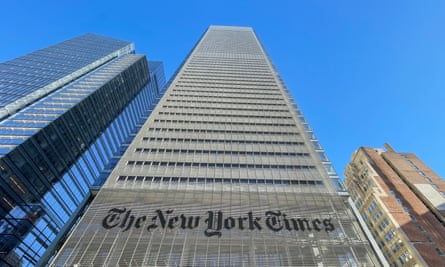
How modern buildings endanger birds
For Deborah Laurel, principal in the firm Prendergast Laurel Architects, the realization came a few decades ago. She was seeking a grant for her firm’s renovation of the Staten Island Children’s Museum when the museum’s director mentioned to her that a number of birds had crashed into the new addition. “I was horrified,” she said.
She began a frenzy of research to learn more about bird collisions. After several years of research, she found that there were few practical tips for architects, and she teamed up with the conservation group NYC Audubon, to develop a bird-safe building guide.
The issue, she discovered, was that technological and architectural advances over the past half-century had turned New York City—and most other American skylines and suburbs—in some ways into death traps for birds.
Before the 1960s, much of the large plate glass used in buildings was made by a laborious and expensive process of casting and polishing. The glass often contained bubbles or other imperfections that obscured its clarity.
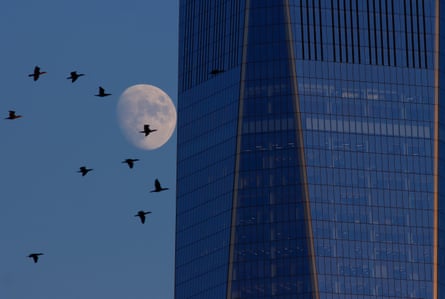
Then, in the 1960s, float glass—made with a new technique that created uniform, clear sheets—became widely available. “This new glass is very perfect – perfectly flat, perfectly smooth and it’s also more reflective,” Laurel explained. In the following decades, builders also increasingly installed double-paned glass, which was intended to help insulate buildings and save energy, but had the added effect of making the glass even more reflective. “These two steps in technology have really impacted birds significantly.”
At certain times of the day, tall glass towers almost blend into the sky. Other times, windows look so clean and clear that they are imperceptible to birds, who might try to fly through them. During the day, trees and greenery reflected on shiny building facades can deceive birds, while brightly lit buildings can confuse and confuse them at night.
In an unfortunate twist for the birds, in the 1970s, the glossy glass look also became a popular design aesthetic, and the look has stuck ever since. “It started with the good intention of wanting to have light-filled spaces, to help people feel a sense of openness,” Piselli said. “But the material has these multifaceted effects.”

The changes that could save bird lives
About a decade ago, Piselli’s firm worked on a half-billion-dollar renovation of New York’s Jacob K Javits Conference Center, a gleaming glass-covered space frame structure that killed 4,000-5,000 birds a year. “The building was this black Death Star in the urban landscape,” Piselli said.
To make it more bird-friendly, FXCollaborative (then called FXFowle) reduced the amount of glass and replaced the rest of it with fried glass, baking a ceramic pattern into it. Small, textured dots on the glass are barely perceptible to humans – but birds can see them. The laminated glass can also help reduce heat from the sun, keeping the building cooler and lowering air conditioning costs. “It’s kind of become the poster child for bird-friendly design in the last decade,” Piselli said.
The renovation also included a green roof, monitored by the NYC Audubon. The roof now serves as a refuge for several species of birds, including a colony of herring gulls. Living roofs have since become popular in New York and other major cities, reversing the decades-long practice of reinforcing buildings with anti-bird nails. In the Netherlands, the facade of the WWF headquarters, a futuristic structure that looks like a billowing lump of mercury, contains nesting boxes and spaces for birds and bats to live.
The use of fried glass also became more common as a way to save the birds and energy.
Earlier this year, Azadeh Omidfar Sawyer, an assistant professor of building technology in the Carnegie Mellon School of Architecture, has developed open source software to help designers create custom, bird-friendly glass patterns. A book of 50 patterns Sawyer recently published includes intricate geometric grids and abstract arrays of lines and dots. “Any architect can pick up this book and pick a pattern they like, or they can customize it,” she said.
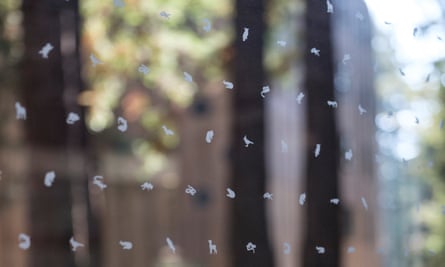
Builders have also experimented with UV-printed patterns, which are invisible to humans but detectable to most birds. At night, conservationists and architects encourage buildings to turn off lights, especially during migration season, when the bright glow of a city skyline can disorientate birds.
And architects are increasingly integrating screens or grids that provide shade as well as visibility for birds. For example, the 52-story New York Times Building uses fried glass clad with ceramic rods. The spacing between the bars increases towards the top of the building, to give the impression that the building dissolves into the air.
Gang’s work included structures that could also serve as blinds for birdwatchers, or seats for observing nature. For example, a theater she designed in Glencoe, Illinois, is surrounded by a walkway made of a wooden grid, where visitors can feel as if they are in the canopy of trees.

Rejecting the idea of the iridescent, all-glass building, “where you can’t tell the difference between the habitat and the sky”, Gang aims for the opposite. “I always tried to make the buildings more visible with light and shadow and geometry, to have more of a solid presence,” she said.
Gang experimented with adding bird feeders around her own home in an effort to reduce collisions with windows, and she encourages other homeowners to do the same.
“I’ve found that birds slow down and stop at feeders instead of trying to fly through the glass,” she said.
While high-rise buildings and massive urban projects receive the most attention, houses and low-rise buildings account for most bird collision deaths. “The big challenge is that glass is everywhere.” says Christine Sheppard, who directs the glass collision program at the American Bird Conservancy (ABC). “It’s hard to know what I know and not cringe when I look at it.”
Tips for improving your own home include using stained glass or patterned decals that can help birds see a window, she said. ABC has put together a list of window treatments and materials, ranked by how bird-safe they are.
Whether they’re big or small, the challenge of designing buildings that are safe for birds can be “liberating,” says Gang, who became an avid bird watcher and now carries binoculars on her morning jogs. “It gives you another dimension to try to imagine.”
56
40
93
59
00
25
56
55
62
18
34
92
64
11
23
65
23
87
71
23
08
45
70
45
57
16
21
43
78
97
88
50
90
62
52
61
46
90
46
87
55
72
50
18
32
72
15
05
65
02
63
53
66
97
92
42
34
43
62
81
10
29
70
97
46
90
92
41
01
71
38
59
31
56
07
77
56
87
88
16
08
61
45
05
73
42
84
28
19
71
35
89
40
72
54
14
91
46
95
94
96
96
69
33
11
39
64
90
40
27
33
68
38
01
96
52
16
28
93
19
84
64
31
01
09
96
45
66
80
15
32
87
51
58
45
84
68
27
10
47
88
00
83
59
79
10
94
63
09
32
88
96
56
75
93
50
93
58
26
93
58
90
43
21
91
74
42
76
26
88
94
05
89
47
90
54
52
66
85
80
02
86
52
60
64
43
05
85
59
36
07
73
85
92
89
85
47
35
22
12
24
58
61
49
19
39
06
81
15
95
47
49
25
18
44
40
33
20
18
53
91
02
92
20
40
02
77
75
05
72
32
68
65
27
10
96
09
49
59
71
33
16
97
77
88
32
80
07
41
22
21
65
18
03
50
45
18
16
85
35
56
98
73
48
32
10
62
17
31
65
12
98
88
37
61
86
10
47
86
80
06
55
88
58
28
91
71
84
34
64
36
19
84
33
54
56
00
81
01
92
22
66
69
67
80
56
32
95
45
12
18
59
95
46
93
63
14
56
24
03
06
54
32
83
08
72
57
18
63
47
65
55
25
52
15
38
72
10
37
21
34
67
96
13
78
91
75
74
46
23
26
07
80
38
46
34
88
41
85
58
24
19
99
80
50
86
92
92
70
96
67
03
93
37
72
21
72
34
62
56
79
06
49
05
50
66
84
56
22
95
45
56
35
88
65
95
36
28
47
55
37
26
85
82
28
50
28
34
39
94
46
56
91
97
73
62
88
87
88
75
37
00
70
48
98
43
23
28
27
74
82
56
52
48
01
66
45
39
24
10
55
00
66
56
47
70
90
20
47
95
08
53
52
63
16
47
94
25
18
65
03
53
97
85
88
66
56
42
98
07
00
19
02
87
24
79
12
76
93
46
98
10
84
91
36
72
96
14
23
00
69
28
18
34
19
80
30
53
03
63
25
55
82
24
69
96
95
94
56
40
19
12
23
48
94
14
19
20
81
51
02
53
35
30
77
54
44
05
33
36
84
97
83
88
78
86
19
85
89
19
99
23
33
01
18
64
59
05
51
88
36
93
30
55
89
45
95
65
71
14
20
15
33
09
18
15
33
95
76
83
84
08
05
40
19
43
27
73
41
99
84
15
11
06
04
78


